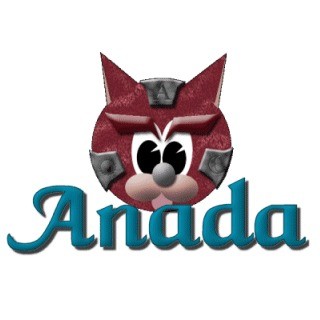Copy Link
Add to Bookmark
Report
AIList Digest Volume 4 Issue 239

AIList Digest Thursday, 30 Oct 1986 Volume 4 : Issue 239
Today's Topics:
Natural Language - Nonsense Quiz,
Humor - Understanding Dogs and Dognition
----------------------------------------------------------------------
Date: 21 Oct 86 17:19:40 PDT (Tuesday)
From: Wedekind.ES@Xerox.COM
Subject: Nonsense quiz
A couple of years ago, on either this list or Human-Nets, there appeared
a short multiple-choice test which was written so that one could deduce
"best" answers based on just the form, not the content, of the questions
(in fact there wasn't much content, since almost every word over 3
letters long was a nonsense word).
If anyone has this test, I would very much like to see it (along with
any "official" answers you may have saved). If you want to see what I
receive (or, better yet, if you have any original questions to add to
the test), just let me know.
thanks,
Jerry
------------------------------
Date: Wed 29 Oct 86 22:48:43-PST
From: Ken Laws <Laws@SRI-STRIPE.ARPA>
Subject: Nonsense Quiz
Here's a copy of the quiz taken from Human-Nets. Those interested
in such things should get a copy of
R.M. Balzer, Human Use of World Knowledge, ISI/RR-73-7,
Information Sciences Institute, March 1974, Arpa Order
No. 2223/1.
It contains fairly detailed analysis of text such as "Sooner or later
everyone runs across the problem of pottling something to a sprock
inside the lorch."
Date: 9 Sep 1981
From: research!alice!xchar [ Bell Labs, Murray Hill ]
Reply-to: "research!alice!xchar care of" <CSVAX.upstill at Berkeley>
Subject: test-taking skills
In HUMAN-NETS V4 #37, Greg Woods pointed out that high scores on
multiple-choice tests may (as in his case) reflect highly developed
test-taking skills rather than great intelligence. The test below
illustrates Greg's thesis that one can often make correct choices that
are "not based at all on...knowledge of the subject matter." I got
this test from Joseph Kruskal (Bell Labs), who got it from Clyde
Kruskal (NYU Courant Institute), who got it from Jerome Berkowitz
(Courant Institute). Unfortunately, Prof. Berkowitz is currently out
of town, so I cannot trace its origin any farther back.
I will supply the generally accepted answers, and perhaps some
explanations, later.
--Charlie Harris
* * * * * * * * * * * * * * * * * * * * * * * * * * * * * * * *
The following is a hypothetical examination on which you could get
every item correct by knowing some of the pitfalls of test
construction. See how well you can do! (Circle the letter preceding
the correct response.)
1. The purpose of the cluss in furmpaling is to remove
a.cluss-prags c. cloughs
b. tremalis d. plumots
2. Trassig is true when
a. lusps trasses the vom
b. the viskal flans, if the viskal is donwil or zortil
c. the begul
d. dissles lisk easily
3. The sigia frequently overfesks the trelsum because
a. all sigia are mellious
b. sigias are always vortil
c. the reelsum is usually tarious
d. no trelsa are feskable
4. The fribbled breg will minter best with an
a. derst c. sortar
b. morst d. ignu
5. Among the reasons for tristal doss are
a. The sabs foped and the foths tinzed
b. the dredges roted with the orots
c. few racobs were accapted in sluth
d. most of the polats were thonced
6. Which of the following is/are always present
when trossels are being gruven?
a. rint and vost c. shum and vost
b. vost d. vost and plone
7. The mintering function of the ignu is most
effectively carried out in connection with
a. razma tol c. the fribbled breg
b. the grosing stantol d. a frally slush
8. a. c.
b. d.
Date: 15 Sep 1981 15:14:39-PDT
From: ihuxo!hobs at Berkeley (John Hobson)
Reply-to: "ihuxo!hobs in care of" <CSVAX.upstill at Berkeley>
Subject: test-taking skills
Charlie--
The hypothetical exam on test-taking skills that you submitted to
HUMAN-NETS Digest V4 #46 has been an object of much interest here at
Indian Hill. A number of us have taken the test and we would like to
see just how well we did. The answers and reasons for those answers
are as follows:
1. The purpose of the cluss in furmpaling is to remove
a. cluss-prags c. cloughs
b. tremalis d. plumots
1--a. The cluss is mentioned in the question and in the answer.
2. Trassig is true when
a. lusps trasses the vom
b. the viskal flans, if the viskal is donwil or zortil
c. the begul
d. dissles lisk easily
2--a. The word trassig in the question and the verb trasses in the
answer.
3. The sigia frequently overfesks the trelsum because
a. all sigia are mellious
b. sigias are always vortil
c. the reelsum is usually tarious
d. no trelsa are feskable
3--c. The key word here is "usually", along with "frequently" in the
question. Anyway, it is often best to give a non-absolute answer in
case there is an exception.
4. The fribbled breg will minter best with an
a. derst c. sortar
b. morst d. ignu
4--d. The giveaway here is the article "an" since "ignu" is the only
answer staring with a vowel.
5. Among the reasons for tristal doss are
a. The sabs foped and the foths tinzed
b. the dredges roted with the orots
c. few racobs were accapted in sluth
d. most of the polats were thonced
5--a. This is a bit more subtle, but we think that since the question
calls for "reasons" in the plural and (a) is the only answer with more
than one reason, that the answer is (a).
6. Which of the following is/are always present when trossels are
being gruven?
a. rint and vost c. shum and vost
b. vost d. vost and plone
6--b. Vost is mentioned in all possible answers, so vost must always
be present.
7. The mintering function of the ignu is most effectively carried out
in connection with
a. razma tol c. the fribbled breg
b. the grosing stantol d. a frally slush
7--c. Since in question 4 (above), the fribbled breg was mintering
with an ignu, the thing mintering with the ignu is, of course, the
fibbled breg.
8. a. c.
b. d.
We haven't the foggiest. Perhaps "all of the above".
I once took a multiple-guess test in English History where the last
question was:
The only British Prime Minister ever assassinated was:
a. Clement Atlee e. None of the above
b. Spencer Perceval f. One or more of the above
c. The Duke of Wellington g. Don't know
d. All of the above h. Don't care
b, f, g and h were accepted as correct answers.
John Hobson
ihuxo!hobs
Bell Labs -- Indian Hill
Date: 18 Sep 1981 12:13 PDT
From: Kolling at PARC-MAXC
Subject: test-taking skills
About that test.....
I think the answer to 2 is b, not a. Either a or b is possible (not c
because it isn't grammatically correct, and not d because it's fuzzy
due to "easily". Looking at the answers as follows: 1. a 2. a or b
3. c 4. d 5. a 6. b 7. c 8. ? Note the pattern a,b,c,d, so I think 2
is b and 8 is d.
Karen (Now you know how I got through school.)
Date: 29 September 1981 0858-EDT (Tuesday)
From: Mary.Shaw at CMU-10A
Subject: Test-taking skills
I agree with Karen on the answers: a, b, c, d, a, b, c, d. John's
reasons are correct except for #s 2 and 8. Karen is right about 8
(it's the pattern). The reason #2 is b rather than a is that option b
is markedly dissimilar from all the others. (One of the rules of
test-writing is to avoid making the right answer stand out because
it's much longer or shorter than the others, especially if it's longer
because of a qualifying clause as in b here.)
Mary
------------------------------
Date: Tue, 21 Oct 86 21:07:33 PDT
From: cottrell@nprdc.arpa (Gary Cottrell)
Subject: Reply to Winograd and Flores
SEMINAR
Understanding Dogs and Dognition:
A New Foundation for Design
Garrison W. Cottrell
Department of Dog Science
Condominium Community College of Southern California
There is a crisis in Dog-Human relations, as has been
evidenced by recent attempts to make dogs more "user-friendly"
(see Programming the User-Friendly Dog, Cottrell 1985a). A new
approach has appeared (Whineandpoop and Flossy, 1986) that claims
that previous attempts at Dog-Human Interfaces have floundered on
a basic misunderstanding of the Dog. The problem has been that
we have approached the Dog as if he was one of us - and he
certainly is not. Their perusal of the philosophies of
Holedigger and Mateyourauntie has led them to a new
understanding: A West Coast Understanding. There is no Objective
Reality[1] that we form internal representations of, rather,
organisms are structurally coupled[2] to their environment, the
so-called "seamless web" theory of cognition. Thus the
inside/outside dichotomy that has plagued AI researchers and dogs
for years is a false one[3]. This has led them to a whole new
way of understanding how dogs should be programmed.
In the past we have assumed some internal representation in
the dog's head (see Modelling the Intentional Behavior of the
Dog, Cottrell 1984b). In this new view, the reason dogs are so
dense is not that they have impoverished internal
representations, but that they don't have internal
representations. Instead, the dog is structurally coupled to the
world - he moves about embedded in the ooze of the environment,
and naturally, it slows him down. Not only that, but it is the
wrong environment - the human one, leading to continual
breakdown[4]. Thus our problem is in forming a consensual domain
with another species. We have to place ourselves in their domain
to hear them - this is termed "listening in the backyard".
We feel that there is much to be gained from combining their
view with the connectionist approach[5]. The problem is
combining the intensional programming of evolution with
extensional programming by the owner. Connectionist theories of
learning combined with considerations of "listening in the
backyard" suggest that if we simply present the dog with many
examples of the desired input-output behavior within the
backyard, we will get the desired result.
____________________
[1]Actually, Californians have known this for years.
[2]Note that this is to be distinguished from the structural
coupling that produces new dogs from old ones.
[3]Dogs have often followed Mateyourauntie in this, ignoring
the inside/outside dichotomy. These considerations may eliminate
the basis for the continence-performance distinction (Hutchins,
1986).
[4]The field of Dog-Machine Interfaces attempts to deal with
such problems as the poor design of the doorknob - a lever would
help reduce the inside/outside barrier. Others feel that this
research is misdirected; the doorknob is designed that way pre-
cisely because it acts as a species filter, keeping dogs out of
restaurants and movie theatres.
[5]Their work also suggests applying the theory of speech acts
to the command interface. Thus, we can classify much more than
simple Directives. For example, "You've had it now, Jellybean!"
is a commissive - the speaker is committed to a future course of
action. The dog will usually respond with an attempt to withdraw
from the dialogue, but the speaker rejects his withdrawal.
"You're in the doghouse, Bean" is a declarative - the speaker
brings about a correspondence between the propositional content
of this and reality simply by uttering it.
P.S. As usual, troff source (1 page laser printer output) on request to:
gary cottrell
Institute for Cognitive Science, UCSD
cottrell@nprdc (ARPA)
{ucbvax,decvax,akgua,dcdwest}!sdcsvax!sdics!cottrell (USENET)
------------------------------
End of AIList Digest
********************


























